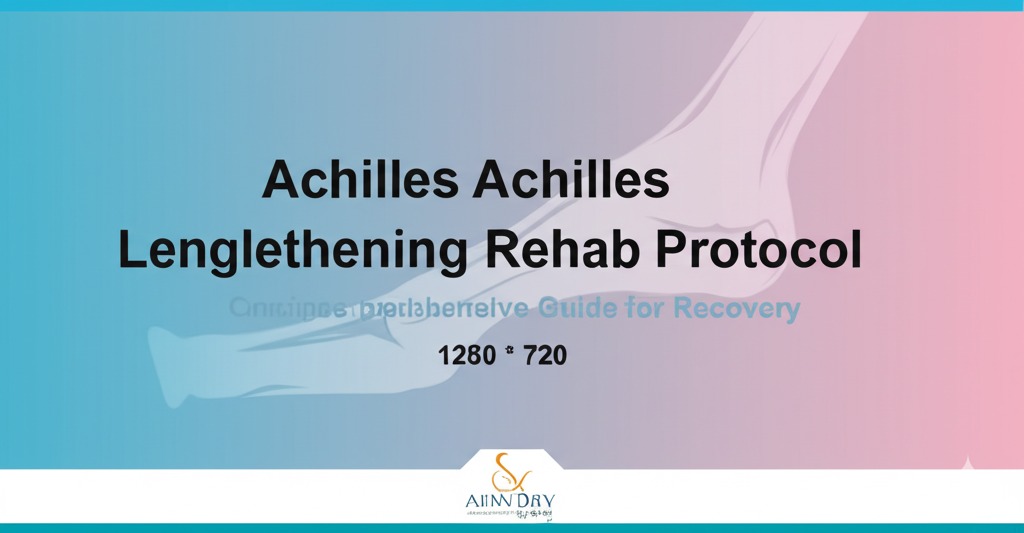Introduction: The Achilles tendon, one of the most critical components of your lower leg, connects your calf muscles to your heel. Injuries to the Achilles tendon, whether from overuse, sports, or sudden movements, can sideline you for weeks or even months. If you’re recovering from an Achilles injury, the road to recovery can be challenging, but with the right rehabilitation exercises, you can regain strength, flexibility, and mobility. In this article, we’ll guide you through some of the most effective Achilles rehab exercises to help you recover safely and efficiently.
H2: Why Achilles Rehab Exercises Are Crucial for Recovery
Achilles tendon injuries are common, especially among athletes or people who engage in high-impact activities. Whether you’ve experienced a mild strain, tendinopathy, or a more severe rupture, proper rehab is essential to prevent re-injury and promote long-term healing. These exercises are designed to strengthen the tendon, improve flexibility, and gradually increase the load placed on the tendon in a controlled manner.
By performing Achilles rehab exercises, you can:
- Enhance tendon strength to prevent future injuries
- Improve flexibility to support proper movement patterns
- Regain range of motion for smoother walking and running
- Reduce pain and inflammation associated with Achilles tendinopathy
H2: Effective Achilles Rehab Exercises for Recovery
H3: Eccentric Heel Drops
One of the most well-researched exercises for Achilles tendon rehab is the eccentric heel drop. This exercise targets the Achilles tendon’s ability to lengthen under load, a critical aspect of recovery.
How to Do It:
- Stand on a step or raised platform with your heels hanging off the edge.
- Slowly lower your heels down towards the ground, feeling a stretch in your calves and Achilles.
- Once at the bottom, use your other leg to help you return to the starting position.
- Repeat for 3 sets of 10-15 reps on each leg.
Why It Works:
Eccentric exercises help improve the strength and flexibility of the tendon, particularly in the later stages of recovery.
H3: Calf Raises
Calf raises are a great way to strengthen the calf muscles and the Achilles tendon without putting too much strain on the area. This exercise also improves your ability to push off when walking or running.
How to Do It:
- Stand with your feet hip-width apart, either on flat ground or a raised surface.
- Slowly rise onto the balls of your feet, engaging your calves.
- Lower back down slowly, focusing on a controlled movement.
- Perform 3 sets of 15-20 repetitions.
Why It Works:
Calf raises strengthen both the gastrocnemius and soleus muscles in the calf, which in turn supports the Achilles tendon. This exercise can be modified by adding weights or increasing reps as your recovery progresses.
H3: Stretching for Flexibility
Maintaining flexibility in the calf muscles and Achilles tendon is essential for preventing stiffness and ensuring proper range of motion.
Key Stretches:
- Standing calf stretch:
Stand with one foot in front of the other, keeping your back leg straight and your heel on the ground. Gently lean forward to stretch your calf. - Towel stretch:
Sit on the floor with your legs extended in front of you. Use a towel or resistance band to pull your toes towards you, feeling a stretch along the Achilles tendon and calf muscles.
Why It Works:
Regular stretching helps alleviate tightness in the calf muscles and the Achilles tendon, improving overall mobility and reducing the risk of re-injury.
H3: Ankle Circles and Mobility Drills
Improving ankle mobility is crucial for restoring full function to the Achilles tendon. Limited ankle mobility can lead to compensation patterns that place extra stress on the Achilles.
How to Do It:
- Sit in a chair with your feet flat on the ground.
- Lift one foot off the ground and perform slow, controlled ankle circles in both directions.
- Perform 10-15 circles in each direction for both feet.
Why It Works:
This exercise improves the range of motion in the ankle joint, which helps in the healing process and can aid in the prevention of further injury.
H2: When to Begin Achilles Rehab Exercises
Starting your rehabilitation exercises too soon can hinder the healing process and worsen the injury. It’s essential to follow the guidance of a healthcare provider or physical therapist before beginning any exercises.
Generally, you should wait until the acute pain and swelling have decreased before initiating rehab exercises. For most people, this occurs within the first 1-2 weeks after the injury. However, always consult with your doctor or therapist for personalized advice based on the severity of your injury.
H2: Tips for a Successful Achilles Rehab Journey
To make the most of your Achilles rehab exercises and speed up your recovery, keep these helpful tips in mind:
- Consistency is key:
Make sure to stick to a routine and perform your exercises regularly. Consistency helps build strength and flexibility over time. - Progress gradually:
Avoid rushing the process. Slowly increase the intensity of your exercises as you begin to feel stronger. Overloading the tendon too quickly can cause setbacks. - Listen to your body:
If you experience sharp pain or discomfort while doing any exercises, stop immediately and consult with a healthcare professional. Mild discomfort is normal, but pain should not occur. - Incorporate rest:
Allow your Achilles tendon enough time to recover. Rest and recovery are just as important as exercise for healing.
Conclusion:
Achilles tendon injuries can be frustrating, but with the right rehabilitation exercises, you can recover effectively and safely. By incorporating eccentric heel drops, calf raises, stretching, and mobility drills into your recovery plan, you’ll strengthen your tendon, improve flexibility, and regain your strength. Remember to be patient, progress gradually, and consult with a professional if necessary. With dedication and the proper rehab exercises, you’ll be back on your feet in no time.

Kallie Snyder is an author at Stonegate Health Rehab, providing valuable insights, recovery guidance, and rehab resources to help individuals achieve better health and well-being.
